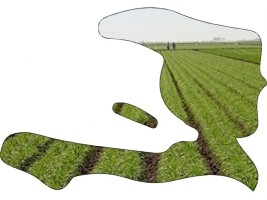|
||||||||||||||||||
|
|
Haiti - Social : Uncertain socio-economic context and difficult spring campaign 29/06/2019 10:01:14
February maize and bean plantations are beginning to be harvested, particularly at Grand Anse and the Nippes and South Wet Mountains. While in the irrigated plains, those of corn and bean augur good harvests. However, the situation is difficult in drought-prone areas, particularly the Far North and coastal areas (Nippes, South). Socio-political disturbances : The current socio-political situation is characterized by a volatile and uncertain climate, against the backdrop of the lack of government, insecurity, the accelerated depreciation of the gourd and Presidential inflation of 18%. The audit report of the Superior Court of Accounts and Administrative Litigation (CSC/CA) on the management of PetroCaribe funds only amplifies the fragility of the current socio-economic and political context. Bilan and climatological perspectives : Overall, the level of rainfall during May is below average, although a recovery was observed during the third decade, in all departments of the country, except the Southeast. Indeed, despite the irregular spatio-temporal distribution of rainfall, the percentage of cultivated soils affected by the low rainfall between the beginning of the season and the third dekad of May, does not exceed 10%, except in the Nippes where it reaches between 25 and 40%. Availability of food products : Locally, availability is dominated by beans, maize, currently being harvested in the above-mentioned regions, banana, roots and tubers, and harvested products as the true tree (especially in the Grand Anse et le Sud), some fruits (citrus fruits, mangos) and vegetable crops, especially in the zone HT06. On the whole, markets are well supplied, for the most part, with imported food products, as is always the case. Price evolution : At the national level, staple food prices are on the rise due to political turmoil and the depreciation of the Gourde against the currencies of our major trading partners, the US dollar and the Dominican peso. Prices of local products, especially maize and black pea, continue to rise, although at a slower pace than in February. The price of corn grain increased by more than 4% on average, from 131 to 137 gourdes in April and 5% between April and May, or nearly 145 gourdes the pot of six pounds. For the same period, the price of black beans has risen by more than 6% on average, the pot of 6 pounds having gone from 349.2 Gourdes in March to more than 371 Gourdes in April and nearly 400 Gourdes, almost 8% in May. As for the price of imported products, the trend remains upward, in the context of the surge in the US dollar compared to the Gourde. The price of imported rice, after slight declines in March and April, is rising significantly in all markets except Port-au-Prince. The 6-pound pot went from close to 223 gourdes to nearly 245 gourdes in May, an average growth of around 10% at the national level. It should be noted that this increase is very significant in Les Cayes market, with a positive variation of nearly 29%. Demand and supply of agricultural labor : During the month of June, agricultural activities were dominated by spring harvests, where rainfall conditions were favorable and weeding crops in areas where the campaign started in mid-April or May, as in the North-East and the Central High Plateau. The demand for labor is relatively low, but it varies from one area to another. In the South, workers are hired on vetiver plantations and paid 100 Gourdes a day.. Poor households also engage in subsistence activities such as petty trading and especially the sale of coal, whose gradual intensification is a strategy of stress and crisis. In the border areas, in addition to coal, migration represents an alternative to the deterioration of the socio-economic conditions of the country, taking into account the more competitive working conditions in the Dominican Republic. Food consumption and changes in current livelihoods : The poorest, who depend largely on market purchases for their food consumption, have seen their purchasing power gradually decline because of the significant decline in income-generating agricultural activities and the rise in prices of staple foods, aggravated by the depreciation of the Gourde and the unstable socio-political situation. Thus, repeated shocks and the duration of their impact are essential elements that affect the stocks and savings of the poorest. Most likely scenario of food security : From June to September, food availability should be ensured by spring harvests (beans, maize, etc.) and other crops such as tubers, bananas, real trees, vegetables and some fruits, especially mango. Nevertheless, the persistence of the drought that led to a late start of the spring 2019 campaign in some areas, particularly the north of the country, casts doubt on the possibility of improving local food availability. Thus, food purchases at the market would remain predominant. In addition, the production and sale of charcoal or the sale of labor and crops will generate income for the very poor. But in a context of rising prices and significant fluctuations in the exchange rate, purchasing power will remain low, keeping a low access for the poor to basic foodstuffs. In these circumstances, they will continue to use negative coping strategies to meet their food needs. Most regions will therefore remain in Stress (Phase 2 of the CPI) or Crisis (Phase 3 of the CPI) food. The second period of the scenario (October-January) coincides with the summer/autumn harvest and with the launch of the winter season in the plains and humid mountains. Consumption will return to a more or less normal level, partly because of the harvests but also because of the seasonal increase in agricultural income. In addition, the sale of labor and other sources of income should allow households to access local and imported products. The availability of certain local products will lead to a relative decline in food prices and the increase in flows of Haitian migrants to their relatives would facilitate a greater circulation of currencies slightly improving the exchange rate Gourde/US dollar. The whole country will therefore be in food stress (Phase 2 of the CPI) with some communes in Crisis (Phase 3 of the CPI) and others without food insecurity (Phase 1 of the CPI). Possible events over the next six months that could change scenarios : Socio-political troubles throughout the country, reduction in market supply, inflation and reduction of food consumption of the poorest, aggravation of the depreciation of the gourde, increase in prices and deterioration of access to imported food, shock climate and weather causing crop losses and reduced food availability. SL/ HaitiLibre
|
|
|
Why HaitiLibre ? |
Contact us |
Français
Copyright © 2010 - 2024 Haitilibre.com |



